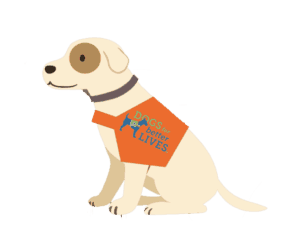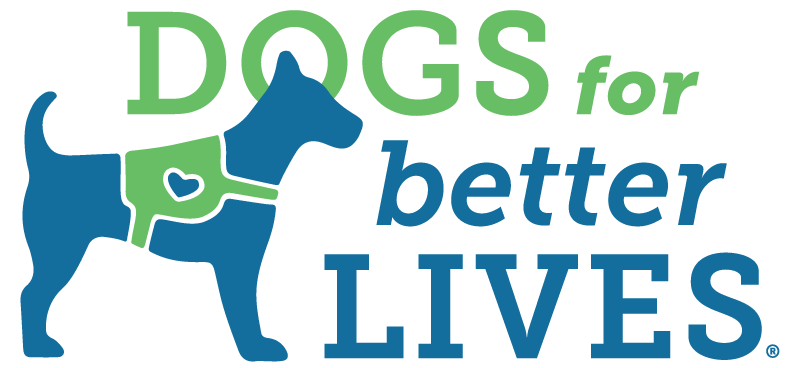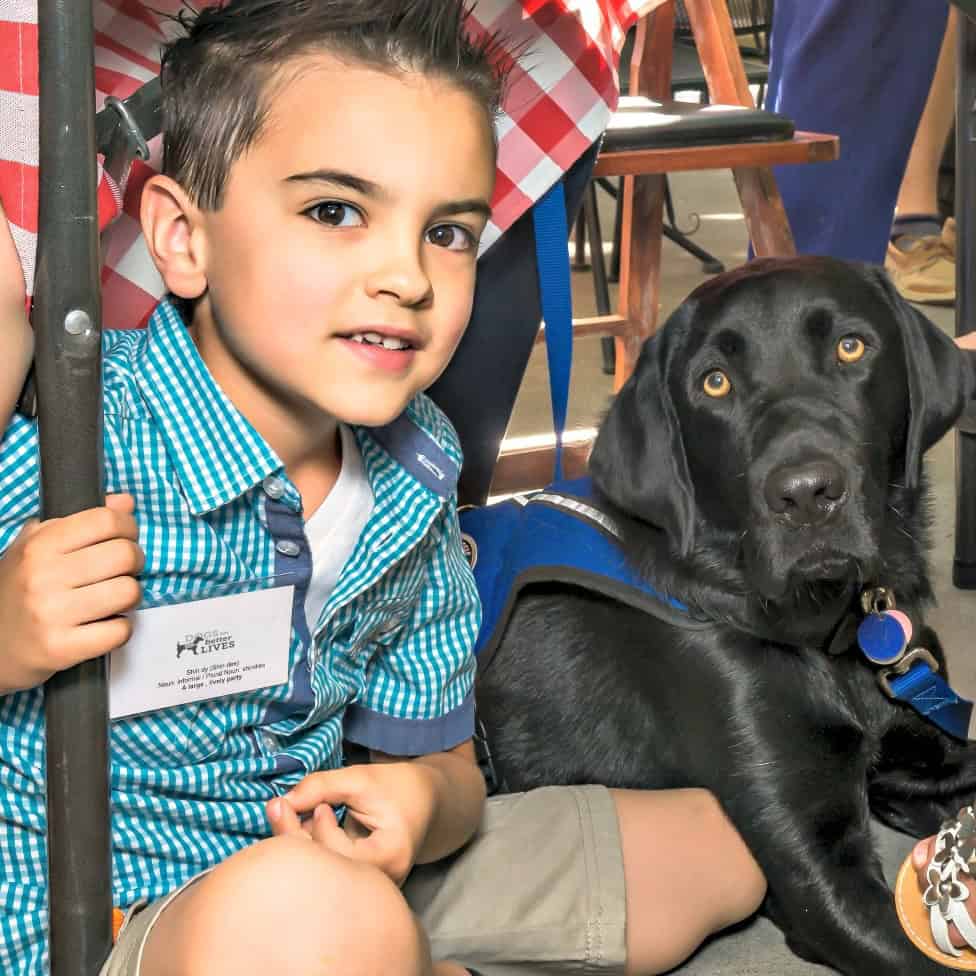Whether you’re a business owner, employee or Assistance Dog advocate (we love you!), lots of people want to know how to spot a fake Assistance Dog (aka an “impawster” dog).
One of the challenges our Assistance Dog community faces is getting access to public places, when there are others trying to abuse Assistance Dog laws with their “impawster” dogs. These dogs might be wearing fake vests, or have owners who simply don’t tell the truth about their dog’s service and training. Unfortunately, when these “impawster” dogs exhibit bad behavior, they give true Assistance Dogs a bad reputation.
Here are a few facts about Assistance Dogs, and some great tips on how to spot a fake Assistance Dog.
What Does a REAL Assistance Dog Look Like?
An Assistance Dog is a working dog specially trained to help someone with a disability or a specific need. These disabilities can be visible and invisible, so it can be difficult to discern whether the animal is a true Assistance Dog or an “impawster” dog. True Assistance Dogs must follow restrictions that are regulated by the Americans With Disabilities Act, and require a great deal of professional training in order to follow specific guidelines laid down by ADA law.
“Emotional support” animals and “therapy dogs”, while certainly useful, are not true Assistance Dogs.
 Under ADA, Assistance Dogs cannot be denied access to a building, even a food service establishment. If they are true Assistance Dogs, this shouldn’t ever cause an inconvenience to a business owner or manager, because Assistance Dogs are under the control of their person.
Under ADA, Assistance Dogs cannot be denied access to a building, even a food service establishment. If they are true Assistance Dogs, this shouldn’t ever cause an inconvenience to a business owner or manager, because Assistance Dogs are under the control of their person.
Assistance Dogs have undergone vigorous training programs to enable them to perform any of the following tasks:
- Alerting others for help for their handler
- Assisting with mobility issues, including picking up dropped items, opening/closing doors, drawers, or navigating difficult terrain
- Monitoring a diabetic handler and alerting them to a diabetic episode or emergency
- Protecting their handler during a seizure
- Serving as a Hearing Dog for handlers with a hearing impairment
- Serving as a Guide Dog for handlers with visual impairment
- Assisting handlers with autism, including anxiety and stressful social situations
- Assisting handlers with PTSD, including grounding from panic attacks
- And so much more!
These dogs are on the job. They’ve learned a variety of important physical skills that set them apart from other dogs parading as Assistance Dogs.
What Are “Impawster” Dogs?
It can be difficult to know how to spot a fake service dog. When in doubt, it’s important to know the two questions you may ask someone who is attempting to get public access for their pet:
- Is the dog a service animal?
- What specific task (or tasks) has the dog been trained to do?
These two questions can be asked to help you determine if the animal is a true Assistance Dog. If a person cannot answer these two questions fully, that’s a fairly good indicator that their dog is not a true Assistance Dog, but rather one in disguise.
How To Identify An “Impawster” Dog
 While it can be a challenge to tell the real dog heros from the fakes, there are a few things to look for when spotting “impawster” dogs:
While it can be a challenge to tell the real dog heros from the fakes, there are a few things to look for when spotting “impawster” dogs:
1. Pulling On The Leash or Misbehaving
True Assistance Dogs go through rigorous training to learn how to be “invisible” because of how well they behave and work in public. These dogs stay at their handler’s side, and are on the alert for dangerous circumstances or triggers. If a dog is distracted by his surroundings, jumping on people, barking or whining, interacting with strangers, pulling on his leash, or generally misbehaving, it’s a good indicator that he has not undergone the training necessary to become a true Assistance Dog.
2. Having An “Accident” Indoors
This not only includes indoor potty accidents, but also male dogs marking their territory in a new place. Bringing a dog that is not properly potty trained into a public indoor space is not only harmful to the Assistance Dog community, it’s disrespectful to proprietors, other shoppers, passengers, customers, etc.
3. Aggressive Behavior
A true Assistance Dog goes through many hours of intentional socialization, to prepare for on-the-job social situations. If you see an animal in an Assistance Dog vest, but it is biting, growling, baring its teeth, or showing any kind of aggressive behavior, it is not a true Assistance Dog.
4. Nervous Behavior
Assistance Dogs are trained to be calm and collected, taking charge in situations of crisis and serving as a cool head to take care of their person. If an animal is demonstrating signs of anxiety or stress, chances are it’s an “impawster” dog.
What Problems Do Fake Assistance Dogs Pose For The TRUE Assistance Dog Community?
It may seem like putting a pet or emotional support animal in an Assistance Dog vest is harmless, but in reality it can be extremely damaging to the Assistance Dog community. Many dog owners have brought their poorly-behaved animal into an establishment, and caused those owners and operators to have a poor opinion of Assistance Dogs.
Real Assistance Dogs have gone through rigorous training to make sure that they are doing their job well. In fact, only around 30% of dogs in training nationwide graduate from their Assistance Dog program. When “impawster” dogs give real hero dogs a bad reputation, our programs, dogs, trainers and recipients suffer the consequences.
What Can You Do?
One of the biggest obstacles the Assistance Dog community faces is awareness. Many people don’t understand how damaging it can be to parade an untrained animal as an Assistance Dog. Likewise, there are many proprietors, business owners, educators, and employees who don’t know the identifying traits of an Assistance Dog, or how valuable they are for their handler’s well-being and freedom.
At Dogs For Better Lives, our goal is to provide more education and better understanding for Assistance Dog programs and the benefits they provide.
And you can help! Start by posting our handy infographic poster that gives all sorts of helpful tips and tricks on spotting real Assistance Dogs in action. They’re perfect for educating employees, coworkers, students, family members and community members the value of true Assistance Dogs.
Assistance Dogs help people in need to live their life with the same ease that many of us take for granted. When a shop, restaurant, airplane or any other establishment denies access to someone with a true Assistance Dog because of a bad experience they’ve had with an “impawster” dog, it ends up robbing people of the same freedoms and access that most people are free to enjoy, and it’s just not right.




